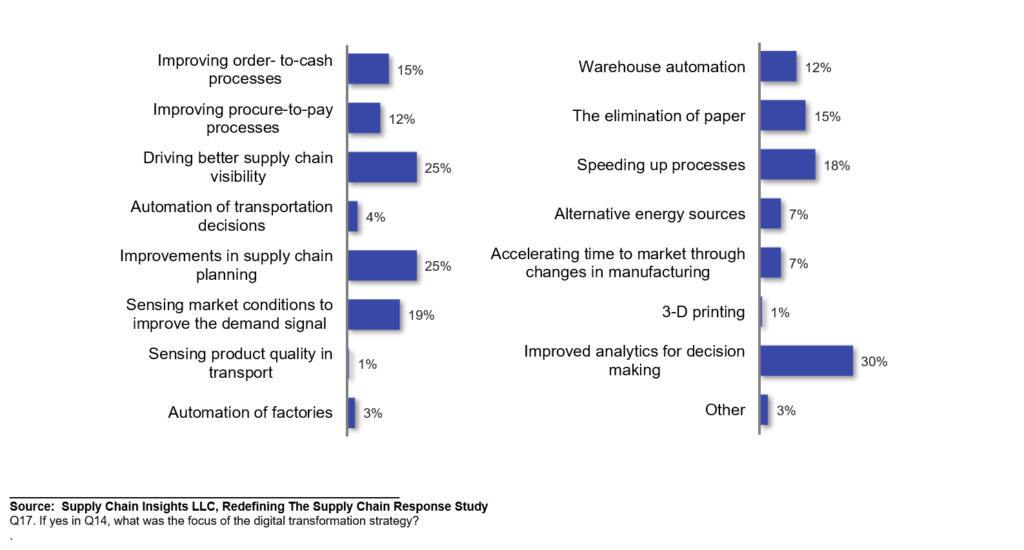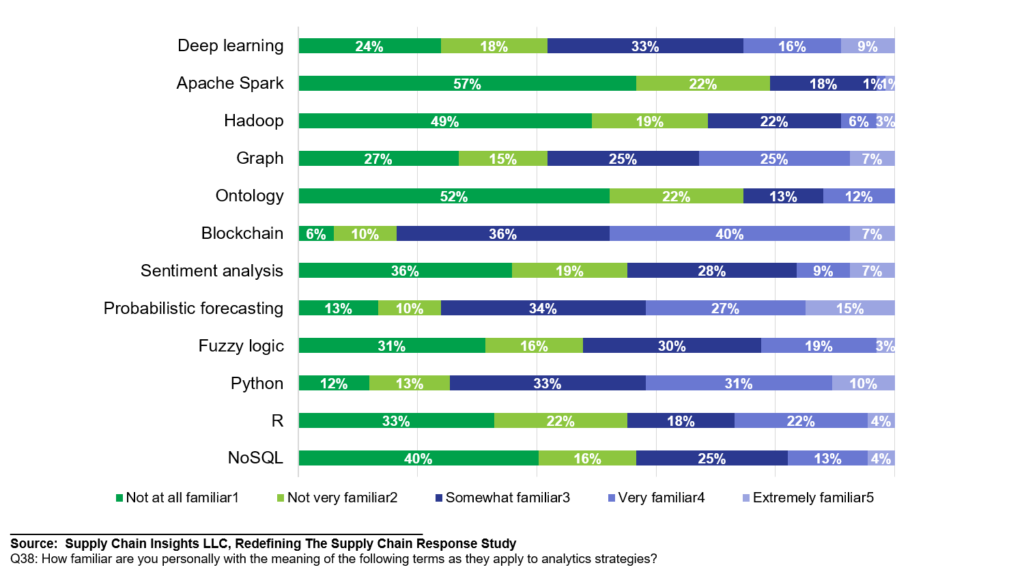Supply chain leaders are in the middle of implementing digital transformation programs. For many organizations, digital transformation is untethered hype. There is a veiled promise for improvement. Here I ask, “Whether we can change course to drive more value in supply chain management?”
“Vieled: not openly or directly revealed or expressed. “
Free Dictionary
What Is Digital Transformation?
I first encountered the term “digital transformation” in 2011. The term is a spin-off of the “Big Data” work from the open source innovation of the last decade. The terms digitization and digital transformation are often used interchangeably even though they are separate and distinct.
Ironically, supply chains are big data problems where the buyers have little understanding of the new technology approaches. Legacy investments are based on relational database technologies, the engines to improve decisions are “set it and forget it”, and the IT standardization restrictions to mitigate cost moves companies to spend millions on old approaches that drive little value. Ironically, this happens sadly in the face of unprecedented variability and risk to business continuity. As shown in Figure 1, only 3% of companies consider themselves innovators. The obstacles for innovators are intense. Not much has changed in the past five years.
Figure 1. Innovation Openness


Digital means different things to different teams. (These definitions are shared in an earlier post.) The most successful investments with the highest satisfaction are manufacturing automation and descriptive analytics/data visualization.
Figure 2. The Focus of Digital Transformation Programs

The journey requires investment and training teams on the promise of new technologies. I believe that many of these new approaches drive value. My belief fuels my need to host events like the Supply Chain Insights Global Summit, facilitate the network of networks group, and challenge technologists to test new approaches in Project Zebra.
To drive forward, cultures need to change to embrace failure as success–the value of learning needs to equal the drive for Return on Investment (ROI). The current state shows that only three-five percent of supply chain leaders are familiar with the new approaches/terms, and 97% of companies lack the culture to test and learn to drive process innovation. The gaps between IT and business leaders are a major roadblock.
Figure 3. Familiarity with New Analytic Approaches

Final Thoughts
We are in an endless cycle. Companies want proven solutions but chase shiny objects. In this journey, leaders use many terms lacking well-grounded objectives.
Despite the proliferation of many new and promising technologies, the tolerance for testing and learning is low. The current approaches using relational databases and traditional models are not equal to today’s challenges. Today, two out of three companies feel that their current technology solutions are not equal to the challenges of the current environment, but will they jump? Will they test new approaches? Sadly, I don’t think so.
I welcome your thoughts.






